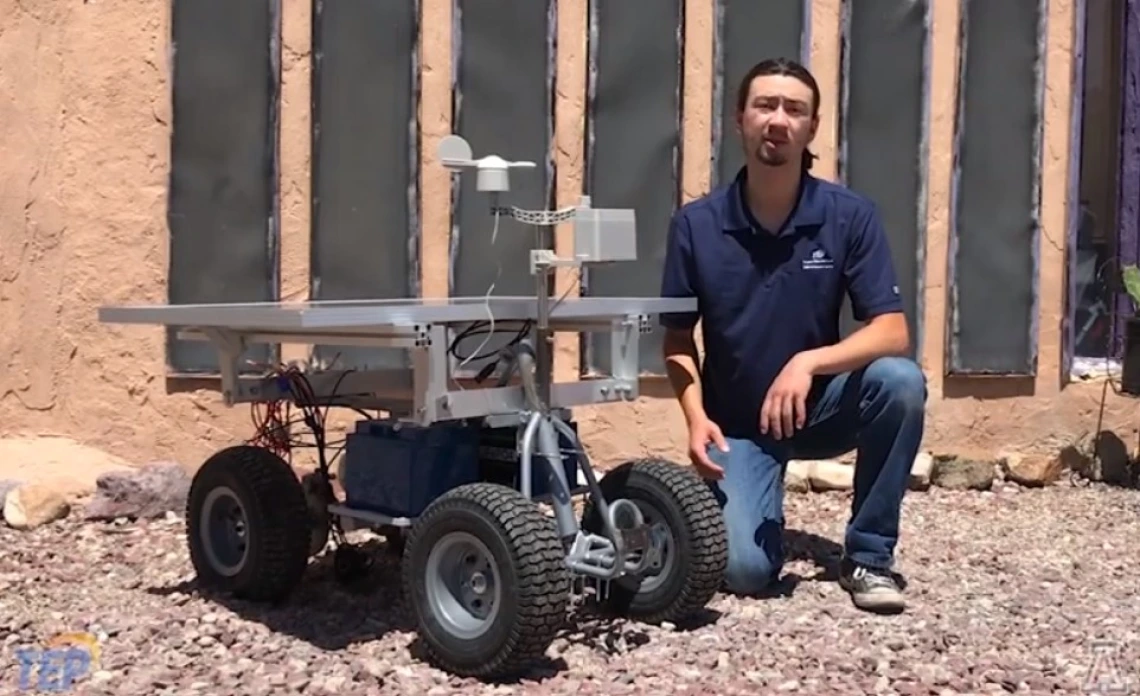UArizona Engineering Students Develop New Tech for Tucson Electric Power

In this year’s UA Craig M. Berge Design Day competition, an engineering student collaboration with Tucson Electric Power (TEP) took the crown.
“I was just kind of shell shocked,” said Peter Vollmer, a mechanical engineer with the project.
The team of six students designed and built a rover to survey a wind turbine farm that TEP owns in New Mexico.
“They wanted to see if they were able to replace a physical person going out there because the closest substation to TEP station is about six and a half hours away. And so they wanted to see if it was possible to create an autonomous Ai influenced robot to go and check to make sure that the wind turbines were working efficiently,” said Susannah Kohn, a mechanical engineer.
The project aims to ultimately save TEP manpower and resources. So why New Mexico? TEP says the wind blows better in our bordering state where the wind farm is than it does in the Tucson area.
“We have solar here in the middle of the day, and now we get wind in the middle of the night and that helps us, in two different different parts of the day, to supply renewables,” said Chris Lynn, the TEP sponsor supervisor.
The students said it felt good to be recognized on a project so significant as this one that is bound to have a lasting impact.
“It took me quite out of left field," said Juliusz "Maurice" Jakobowski, a computer engineer. "I wasn't really expecting anything."
"I just feel nice and kind of relieved as well, because we put in so many hours over the past year. it's such a huge project, and it's nice knowing that paid off,” said Vollmer.
“There might have been like an expletive when I saw our names pop up,” said Kohn.
TEP has been a sponsor in this competition for several years and this is the first year a team it sponsored won.
“They put in some real terrific engineering, all the way through, and really followed the process. We need more innovation like this, to address the future cleaner, greener grid that we want to build,” said Lynn.
And this research has already inspired others to adopt the same type of robotic application.
“Through UA, we were still able to develop a method of thinking and problem solving to help us reach a conclusion for our project,” said Torrey Petersen, an industrial engineer within the project.
“This class definitely feels like it was kind of the next step in kind of bringing whatever we had been learning to the next level or kind of to fruition,” said Jakobowski.
“Not only taking those lessons and experience of how do we apply ourselves in future industry, but also we've learned a lot about ourselves in the process, how to work as a team and how we can also improve in the future as well,” said Daniel Lansdown, a mechanical engineer.
View the KGUN9 video coverage.
Click here to see the winning project presentation.

